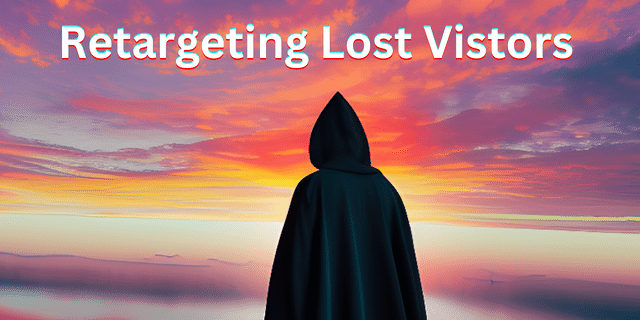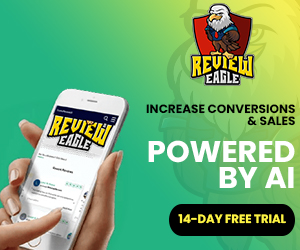Have you ever wondered why some people visit your website, browse through a few pages, and then disappear without making a purchase or taking any action? It can be frustrating, right? You put in so much effort to drive traffic to your website, only to have these visitors slip through the cracks. But what if I told you there’s a way to bring them back and convert them into loyal customers? Welcome to the world of retargeting! In this blog post, we’re going to take a deep dive into the benefits of retargeting and uncover the secrets that will help you win back those lost website visitors. Retargeting is a powerful marketing technique that allows you to target people who have previously visited your website but did not complete a desired action. It’s like giving them a gentle nudge, reminding them about your brand and enticing them to come back. Now, before we delve into the secrets of retargeting, let’s talk about its significance. Every time a visitor lands on your website, it’s an opportunity for you to capture their attention and turn them into a customer. However, not everyone is ready to make a purchase or take action immediately. People might get distracted, compare prices, or simply forget about your brand. That’s where retargeting comes in. It gives you a chance to stay top-of-mind and re-engage those lost visitors, increasing the likelihood of conversion. In this blog post, we’ll explore the different strategies and techniques you can use to make your retargeting campaigns more effective than ever. We’ll discuss the psychology behind retargeting, how to create compelling ads that resonate with your audience, and the best practices to maximize your ROI. So buckle up and get ready to unravel the retargeting secrets that will help you drive more conversions and grow your business!
Looking for advanced retargeting strategies, check out this 5X Retargeting Program for a careful step-by-step blueprint to retargeting success.
The Significance of Retargeting
Retargeting, also known as remarketing, plays a crucial role in digital marketing strategies. It allows businesses to reconnect with potential customers who have shown interest in their products or services but didn’t convert. By utilizing cookies and tracking pixels, retargeting enables marketers to display targeted ads to these lost website visitors as they browse other websites or social media platforms.
One of the significant advantages of retargeting is its ability to keep your brand in front of potential customers, increasing brand recall and recognition. By consistently reminding these visitors about your products or services, you stay top-of-mind when they are ready to make a purchase.
Moreover, retargeting can significantly improve conversion rates. Since retargeted ads are tailored specifically to individuals who have already expressed interest, they are more likely to resonate and result in conversions. This personalized approach allows businesses to deliver relevant content that addresses the specific needs or concerns of potential customers, increasing the chances of driving them back to their website.
Retargeting also provides valuable insights and data that can be used to refine marketing strategies. By analyzing the behavior and preferences of retargeted visitors, businesses can gain a deeper understanding of their target audience, refine their messaging, and optimize their overall marketing efforts.
In conclusion, the significance of retargeting in digital marketing cannot be overstated. It enables businesses to reconnect with lost website visitors, increase brand recall, improve conversion rates, and gather valuable customer insights. Incorporating retargeting into your marketing strategy can help maximize your ROI and drive business growth.
Understanding the Psychology Behind Retargeting
Retargeting is a powerful marketing strategy that aims to bring back lost website visitors and convert them into customers. Understanding the psychology behind retargeting can help marketers effectively implement this technique.
One key aspect of retargeting is the concept of familiarity. When users visit a website, they may not be ready to make a purchase or take any action. By displaying retargeting ads that feature products or services they previously viewed, marketers create a sense of familiarity, reminding users of their initial interest.
Another psychological principle at play is social proof. When users see retargeting ads that highlight customer reviews or testimonials, it creates a sense of credibility and encourages them to reconsider their decision. People are more likely to trust recommendations from others, especially when it comes to making purchasing decisions.
Scarcity is also an effective psychological trigger in retargeting. By emphasizing limited-time offers or exclusive deals, marketers create a sense of urgency and fear of missing out. This can push users to take immediate action and make a purchase.
Furthermore, retargeting ads that utilize personalized messaging can have a significant impact. By addressing users by their name or referencing their previous interactions with the website, marketers can create a personalized experience that resonates with users on an emotional level.
In conclusion, understanding the psychology behind retargeting is crucial for successful implementation. By leveraging familiarity, social proof, scarcity, and personalization, marketers can effectively engage lost website visitors and increase conversions.
Creating Compelling Ads for Retargeting Campaigns
Creating Compelling Ads for Retargeting Campaigns
Retargeting Lost Website Visitors
Retargeting secrets
Retargeting campaigns play a crucial role in digital marketing strategies. By targeting users who have previously shown interest in your website, you have a higher chance of converting them into customers. However, to make your retargeting campaigns effective, it is essential to create compelling ads that capture the attention of your lost website visitors.
Here are some tips to create compelling ads for your retargeting campaigns:
1. Personalize your ads: Tailor your ads to reflect the specific products or services that your lost visitors viewed on your website. By showing relevant content, you increase the chances of re-engaging them.
2. Use eye-catching visuals: Grab your audience’s attention with visually appealing images or videos. Use high-quality visuals that align with your brand’s aesthetic to create a memorable impression.
3. Craft compelling copy: Write concise and persuasive copy that highlights the benefits of your products or services. Focus on what sets you apart from competitors and why visitors should return to your website.
4. Include a strong call-to-action: Encourage visitors to take action by including clear and actionable CTAs. Whether it’s “Shop Now,” “Learn More,” or “Sign Up,” make sure your CTAs are enticing and easy to follow.
5. Test and optimize: Continuously monitor the performance of your retargeting ads and make data-driven optimizations. Experiment with different ad formats, placements, and messaging to find what resonates best with your audience.
In conclusion, creating compelling ads for retargeting campaigns is crucial to re-engage lost website visitors. By personalizing your ads, using eye-catching visuals, crafting persuasive copy, including strong CTAs, and continuously testing and optimizing, you can increase the effectiveness of your retargeting efforts.
Best Practices for Maximizing ROI in Retargeting Campaigns
Best Practices for Maximizing ROI in Retargeting Campaigns
Retargeting is a powerful marketing strategy that allows you to reach out to potential customers who have previously shown interest in your products or services. By using retargeting campaigns effectively, you can significantly increase your return on investment (ROI). Here are some best practices to maximize ROI in your retargeting campaigns.
1. Segment Your Audience: Divide your audience into different segments based on their behavior and interests. This allows you to create personalized retargeting ads that are more relevant to each segment, increasing the chances of conversion.
2. Use Dynamic Ads: Dynamic ads automatically show products or services that a user has previously viewed or shown interest in. By showcasing relevant products, you can capture the attention of potential customers and encourage them to complete their purchase.
3. Set Frequency Caps: Avoid bombarding your audience with excessive retargeting ads. Set frequency caps to control the number of times a user sees your ads. This ensures that your ads stay effective and not annoying to potential customers.
4. Optimize Landing Pages: Ensure that your landing pages are optimized for conversion. Make sure they are visually appealing, easy to navigate, and have clear and compelling calls-to-action. A seamless user experience is key to maximizing ROI.
5. Test and Optimize: Continuously test different ad creatives, messaging, and targeting strategies to identify what works best for your audience. Use A/B testing to compare different variations and optimize your campaigns accordingly.
6. Monitor and Analyze: Regularly monitor the performance of your retargeting campaigns and analyze the data to identify areas of improvement. Pay attention to key metrics such as click-through rates, conversion rates, and cost per conversion.
By implementing these best practices, you can enhance the effectiveness of your retargeting campaigns and drive higher ROI. Remember, retargeting is all about reaching the right people with the right message at the right time.
Best Practices for Maximizing ROI in Retargeting
Maximizing ROI in retargeting can be a challenging task, but implementing these best practices can help you achieve better results.
1. Define Your Target Audience: To increase the effectiveness of your retargeting campaigns, it is crucial to identify and understand your target audience. Analyze their behavior, demographics, and preferences to create personalized and relevant ads.
2. Segment Your Audience: Instead of targeting all website visitors, segment your audience based on their interaction with your site. Create separate retargeting campaigns for different segments to deliver tailored messages and offers.
3. Set Clear Goals: Clearly define your goals and key performance indicators (KPIs) before launching a retargeting campaign. Whether it’s increasing conversions, driving traffic, or boosting brand awareness, having specific goals will help you measure success.
4. Engaging Ad Creatives: Create visually appealing and attention-grabbing ad creatives for your retargeting campaigns. Use compelling images, persuasive copy, and strong calls-to-action to entice users to click and revisit your website.
5. Frequency Capping: Avoid bombarding your audience with excessive ad impressions. Set frequency caps to control the number of times a user sees your ad within a specific time frame, preventing ad fatigue and maintaining interest.
6. Test and Optimize: Continuously test different ad variations, placements, and messaging to identify what works best for your audience. Use A/B testing to analyze performance and optimize your campaigns accordingly.
7. Track and Measure: Implement conversion tracking and analytics tools to monitor the performance of your retargeting campaigns. Analyze key metrics such as click-through rates, conversion rates, and cost per acquisition to evaluate ROI and make data-driven decisions.
By following these best practices, you can enhance the effectiveness of your retargeting efforts, increase conversions, and maximize your return on investment.
Conclusion
Retargeting lost website visitors is a powerful strategy to bring them back and convert them into customers. By implementing retargeting techniques, you can re-engage with potential customers who showed interest in your website but left without making a purchase.
One of the secrets to successful retargeting is segmenting your audience. By dividing your visitors into specific groups based on their behavior, you can customize your ads to suit their interests and needs. For example, if someone abandoned their shopping cart, you can create personalized ads showcasing the items they left behind, enticing them to complete their purchase.
Another retargeting secret is using dynamic ads. These ads automatically adjust their content based on the browsing behavior of the user. By displaying products or services that the visitor has previously shown interest in, dynamic ads provide a personalized experience and increase the chances of conversion.
Furthermore, timing is crucial when it comes to retargeting. You want to strike while the iron is hot. By setting a specific timeframe for your retargeting campaigns, you can ensure your ads are shown to visitors shortly after they leave your website, keeping your brand fresh in their minds.
In conclusion, retargeting lost website visitors is a valuable marketing strategy that can significantly improve your conversion rates. By segmenting your audience, utilizing dynamic ads, and timing your campaigns effectively, you can maximize the potential of retargeting and bring back those valuable visitors who slipped away.









